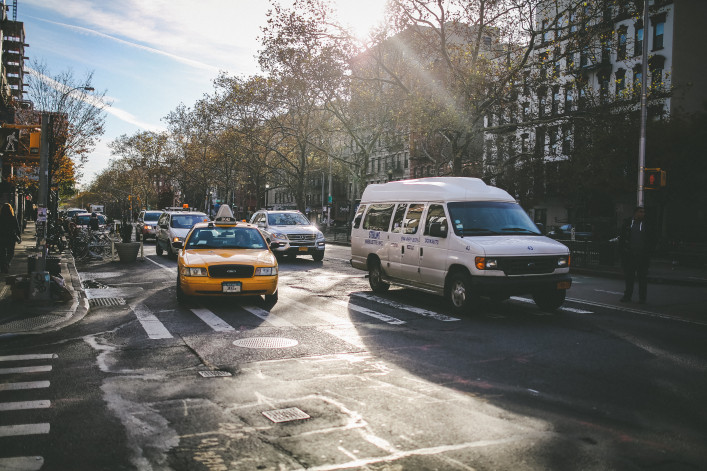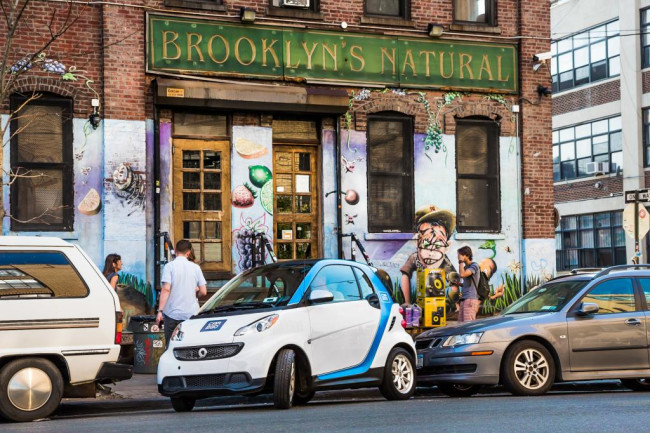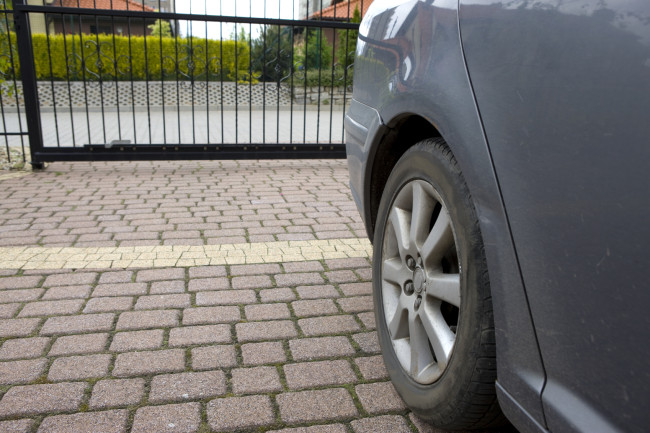What happens to NYC neighborhoods when parking lots disappear?
For many locals, one of NYC’s major selling points is that there’s no need to have a car—or deal with insurance, maintenance, and traffic-induced agita. So it would seem to follow that in a densely populated city where demand for housing eternally outpaces supply, parking lots and garages would be an understandable sacrifice to make to the real estate gods.
Apparently not: One group of uptown residents has launched a campaign called Save Manhattan Valley in response to a proposal to demolish several neighborhood garages to make way for a housing complex for senior citizens and low-income New Yorkers. The proposed building violates city zoning laws, members argue, and poses environmental threats to the area, as a public school school and its playground sit across from the site, where construction might expose its young students to toxins.
Moreover, the campaign’s website claims, the loss of parking will create major challenges for the residents, local merchants, and staff at nearby St. Luke’s Hospital and Columbia University who commute to their jobs, as well as increase traffic congestion on 108th Street as motorists search for spots. (We reached out to the group for comment, but were declined.)
A New York Times analysis points out that there are no clear villains in this particular battle: The need for affordable housing in New York is vast, but at the same time, the loss of garages could indeed make life more difficult for local businesses. And there’s recent precedent for residents fighting back to protect lots: the Times Ledger reports that earlier this month, locals in Sunnyside successfully opposed a plan to build a 209-unit affordable housing project in the neighborhood, in part on the grounds that it would be erected on an existing parking lot.
David King, an assistant professor at Arizona State University who specializes in urban planning and transportation policy, dismisses some of the Save Manhattan Valley campaign’s concerns. King, who lived in Morningside Heights until recently, says that there’s no shortage of parking in the neighborhood, but there is an urgent need for more affordable housing options.
“Those neighbors complaining about more traffic—what they’re saying is, ‘If you take my parking away, I’m going to drive around all these streets until I find a spot.’ That’s a terrible reason to oppose affordable housing—it’s about as selfish as you can get,” King says. “We should not oppose affordable housing so that a small handful of people who drive into the neighborhood have parking.”
King points out that many NYC drivers only use their cars for weekend trips, which means they could easily travel uptown 20 blocks for parking, if need be: “If you took any parking garage out of commission in that area, you could still find ample parking.”
Far more common, though, than new options for low- and middle-income people are luxury high-rises taking the place of city parking spaces. In 2014, Curbed gave a rundown of 23 developments that would go up on former lots and garages; last year, it revealed how handsomely developers are willing to pay for this privilege in a piece about DHA Capital’s decision to purchase a Nolita parking lot for $50 million.
But as the Real Deal explains, some developers aren’t stealing lots at all—because they built them in the first place. Real estate firms in NYC will occasionally purchase land they expect to appreciate and operate it as parking lots until its value skyrockets, at which point they begin building.
In these instances, King says, a neighborhood might not experience parking loss at all. “A luxury property is more likely to substitute parking,” King explains. “A luxury condo built on a lot with 100 spaces probably will build that many spaces.” And thanks to a city ordinance passed a few years ago that made all parking public, those condos can lease their spots to anyone.
Affordable housing projects, meanwhile, are much less likely to build parking as low-income tenants typically do not own cars—and if the developers do build lots, they might have trouble keeping them filled. It bears mentioning that the number of spots that would be lost to the Morningside Heights project won't all be replaced, according to present plans, although according to Streetsblog NYC, the developer plans to leave one lot of 125 parking spaces untouched for five years.
The disappearance of parking is not isolated to New York, but in fact is part of a global trend. The Guardian reports that urban centers from San Francisco to Zurich to São Paulo are changing their parking policies, aiming to discourage driving in favor of lower-impact alternatives like walking and biking.
New ways to deal with parking shortages, relying on smart technology to cut down on motorists’ time spent hunting for spots, are popping up. San Francisco, for instance, launched SFPark, which provides drivers with real-time data on parking availability and pricing. (The app SpotHero offers a similar service to drivers in several cities, including New York.)
“This is something that has been going on throughout the world,” King says. It was sparked, he adds, by the The High Cost of Free Parking by Donald Shoup, which came out in 2005. The book dives into how free parking led to urban sprawl, pollution, congestion, and overreliance on cars, and it galvanized many urban leaders into using land differently and developing alternatives.
“Manhattan has reduced spaces by 40,000, and the amount of driving has declined,” King says—presumably in favor of traveling by foot, bike, and public transit. He cites an NYC Planning study that looked at New York’s “inner ring”—that is, the area encompassing Upper Manhattan, the South Bronx, western Queens, and north and central Brooklyn—which found that these neighborhoods offer the highest potential to reduce parking and car ownership.
“These areas are very well-served by transit and taxis, and they’re walkable and bikeable. There’s no reason for additional parking,” King says. Indeed, the report concluded that instead of adding more parking, expanding transportation options in the inner ring, from bike and car shares to ferry service, would support the highest quality of life for residents.
You Might Also Like


























